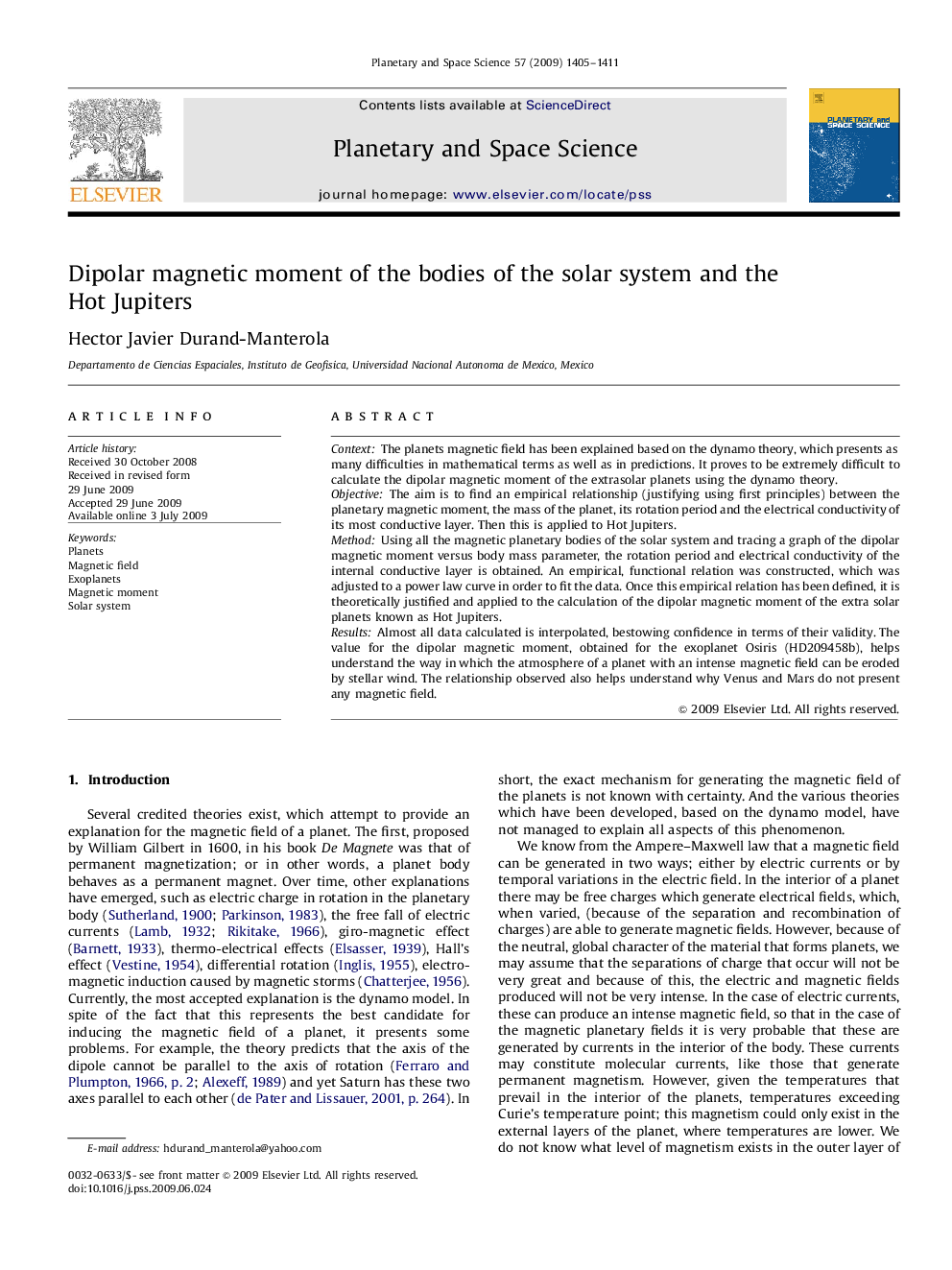| Article ID | Journal | Published Year | Pages | File Type |
|---|---|---|---|---|
| 1782046 | Planetary and Space Science | 2009 | 7 Pages |
ContextThe planets magnetic field has been explained based on the dynamo theory, which presents as many difficulties in mathematical terms as well as in predictions. It proves to be extremely difficult to calculate the dipolar magnetic moment of the extrasolar planets using the dynamo theory.ObjectiveThe aim is to find an empirical relationship (justifying using first principles) between the planetary magnetic moment, the mass of the planet, its rotation period and the electrical conductivity of its most conductive layer. Then this is applied to Hot Jupiters.MethodUsing all the magnetic planetary bodies of the solar system and tracing a graph of the dipolar magnetic moment versus body mass parameter, the rotation period and electrical conductivity of the internal conductive layer is obtained. An empirical, functional relation was constructed, which was adjusted to a power law curve in order to fit the data. Once this empirical relation has been defined, it is theoretically justified and applied to the calculation of the dipolar magnetic moment of the extra solar planets known as Hot Jupiters.ResultsAlmost all data calculated is interpolated, bestowing confidence in terms of their validity. The value for the dipolar magnetic moment, obtained for the exoplanet Osiris (HD209458b), helps understand the way in which the atmosphere of a planet with an intense magnetic field can be eroded by stellar wind. The relationship observed also helps understand why Venus and Mars do not present any magnetic field.
